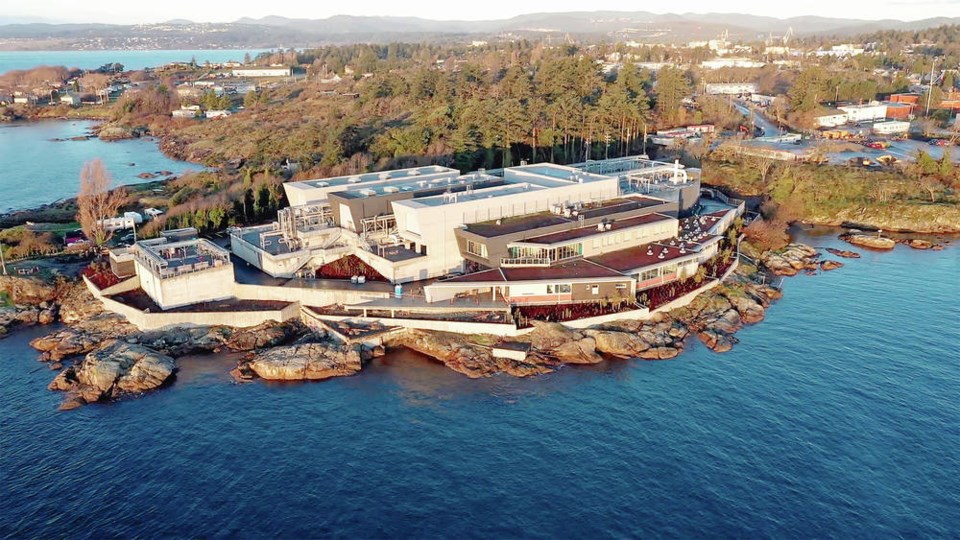Greater Victoria isn’t pumping raw sewage into the ocean anymore, but the nasty stuff left over from sewage treatment — the sludge — is still causing an environmental controversy.
The company under contract to operate the $775-million sewage treatment facilities is having problems with dryers and filters at the end of the new system, according to Glen Harris, senior manager of environmental protection for the Capital Regional District.
Dried bio-solids are supposed to be going to a cement plant in Richmond, which wants to burn it as an alternative to coal, but the so-called “cake” coming out of the digester at Hartland Landfill is still too moist and the particle size is below standards for the kiln at Lafarge Canada’s cement plant.
The Capital Regional District is burying the bio-solids at the landfill as a “controlled waste” in clay-lined trenches mixed with garbage as a temporary measure until the problems are fixed.
Harris said the consortium running the new sewage treatment facilities — Hartland Resource Management Group, which includes the firms Bird Capital, Bird Construction, Maple Reinders and Synagro Technologies — is confident it has identified problems with the system, which should be fixed in a few weeks. He said portable drum dryers are an option in getting the bio-solids into shape for shipping.
Harris also noted that sieves are being installed to achieve the 10-millimetre particle size of the bio-solids.
Metchosin Mayor John Ranns expressed concerns about the “extended commissioning period” of the expensive project, and that bio-solids were being buried at the landfill.
He introduced a successful motion Wednesday calling for the CRD to join Esquimalt’s study of gasification of solid waste and kitchen scraps, and look at that process as an option for sewage bio-solids.
The process of gasification breaks down carbon-based feedstock into its basic constituents, allowing easy removal of pollutants.
CRD staff said the consortium is under a “performance-based contract,” pointing to a $63-million deal over 20 years to operate the plant that includes terms of the finished bio-solids.
The Lafarge plant has agreed to take all of the CRD bio-solids, except for a few weeks a year during its maintenance shutdowns. So far, the company has accepted just one load, in April.
The CRD is studying long-term solutions for the bio-solids and is mandated by the province’s Environment Ministry to find “beneficial uses” for the end product.
The ministry did not support the construction of a bio-cell for bio-solids disposal at the landfill, but did approve short-term and contingency plans, including use as bio-cover to capture gases or as a way to enhance vegetative growth over closed landfill cells. However, the CRD has not initiated either, and is burying the bio-solids with garbage.
With every flush of every toilet, the sludge keeps coming, and several groups were lining up Wednesday to voice their concerns to the CRD’s Environmental Services Committee.
Geoff Krause, a marine biologist and part of the Saanich Inlet Protection Society, told directors the inlet has been slowly recovering and he worries bio-solids leaking into the waterway via lakes and streams could undermine the progress that’s been made. “It’s our area and we carry the burden if things do not go as planned,” he said.
Dave Cowen, general manager of Butchart Gardens and spokesman for the Peninsula Bio-solids Coalition, called bio-solids at Hartland “a red flag.”
“They are a toxic sludge filled with thousands of chemicals and heavy components — called forever chemicals — and any mobility of these chemicals will be disastrous for businesses, farmers and parks.”
The CRD has said up to 7,000 tonnes of bio-solids may have to be buried at Hartland. Cowen said that’s too much to be spread in a small area on short notice and with no public consultation. “We’re saying don’t spread the bio-solids.”
Nikki Macdonald of the Mount Work Coalition said the risk of spreading bio-solids is unknown. “If the [U.S. Environmental Protection Agency] can’t assess the safety of doing this, how can the CRD?” she said.
All of the groups are calling for increased and transparent testing of potential leeching around the Hartland site.
In a report submitted Wednesday, staff said CRD is in “full compliance with its regulatory commitments” to protect human health and the environment.
It said the disposal of de-watered residuals and bio-solids at Hartland is not anticipated to have any environmental or climate implications because of the controls in place to ensure protection of surface and groundwater resources and to ensure collection of landfill gas.
The CRD said the Hartland environmental monitoring program meets all provincial regulatory requirements, including monitoring of ground and surface waters at the perimeter of the site.
The report said the CRD does not have the resources to fund additional environmental studies outside the scope of what’s already in place at Hartland, adding these studies are not needed to demonstrate regulatory compliance.



